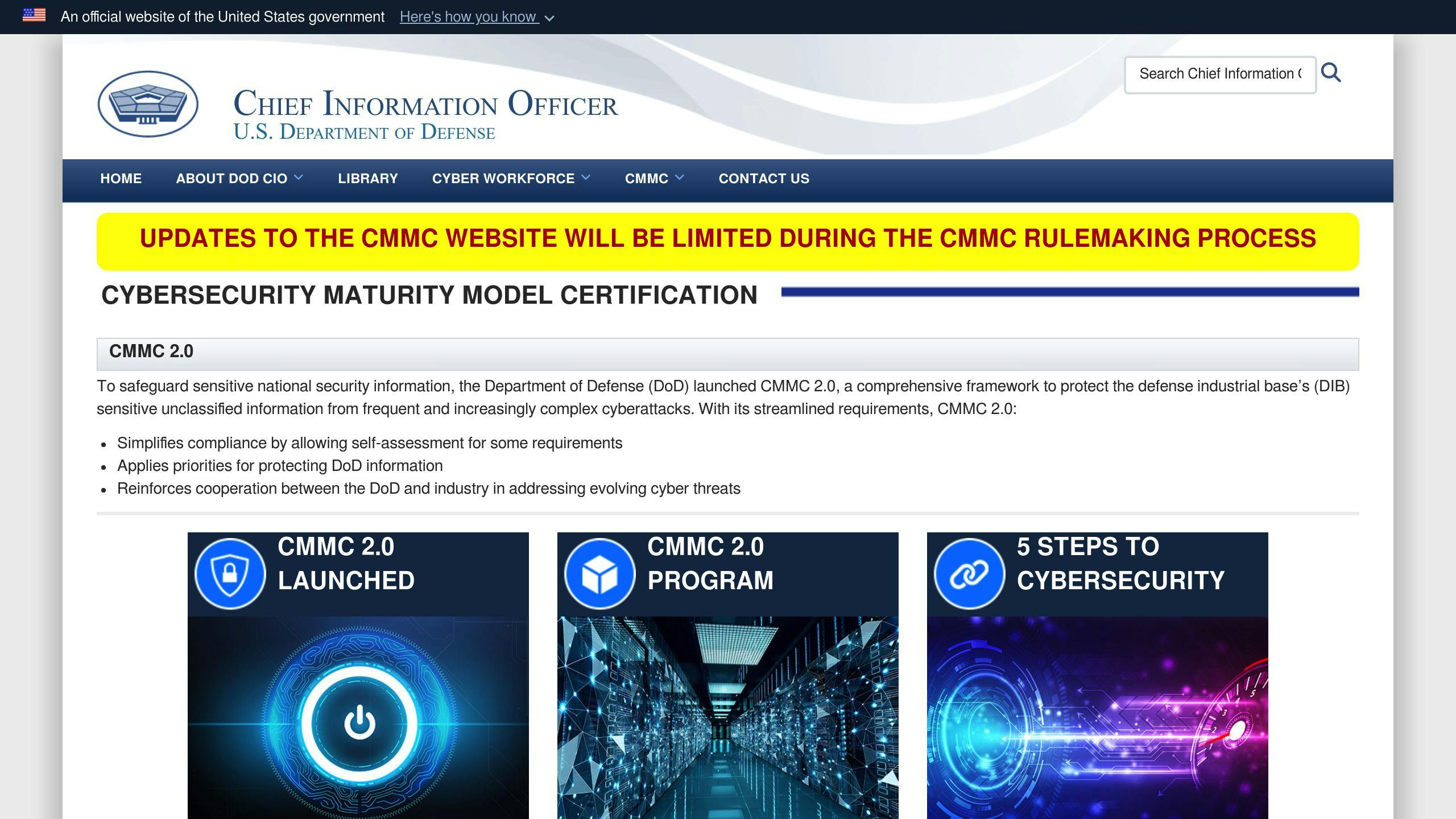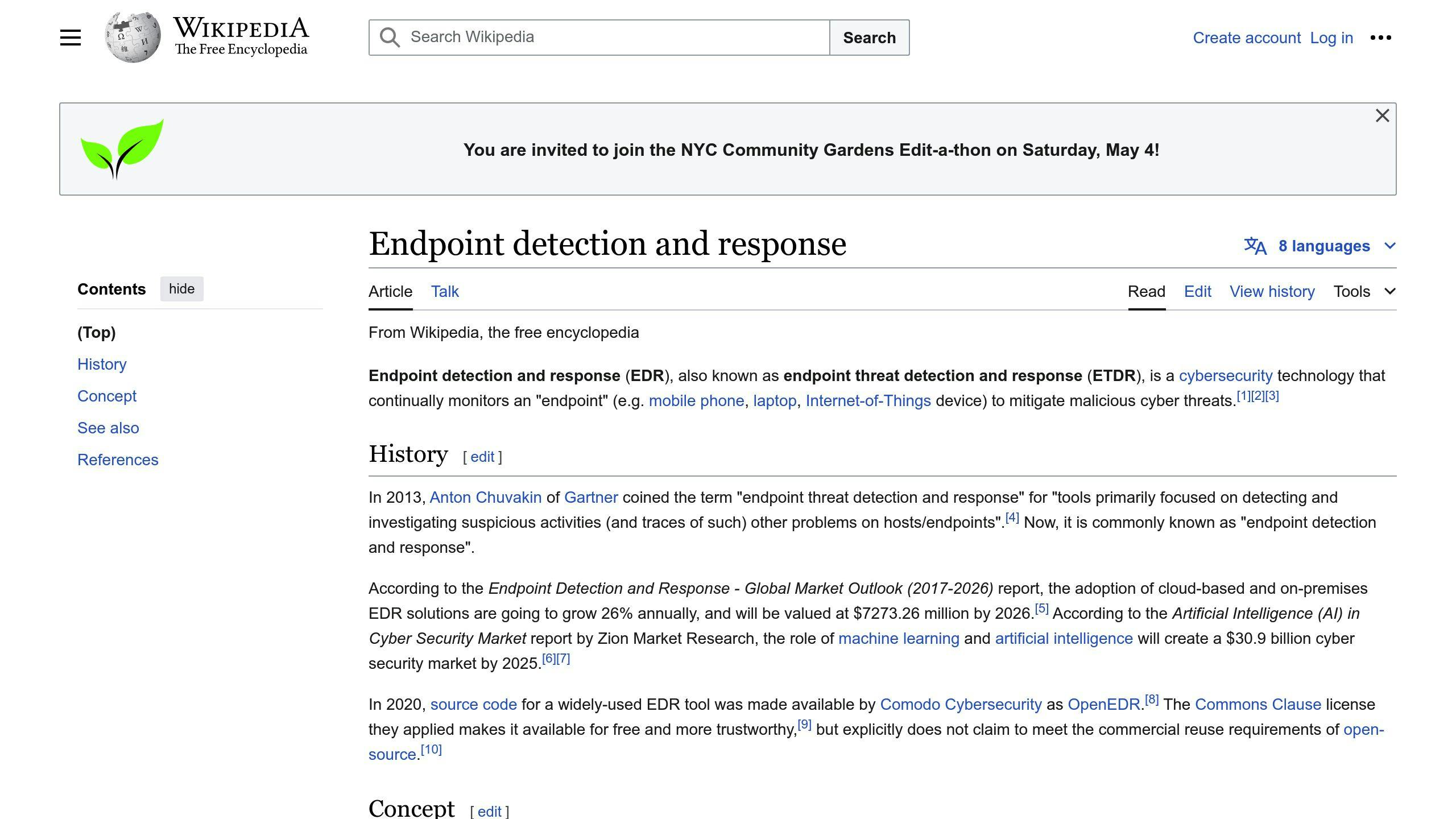Here's what you need to know about incident response compliance with NIST and CMMC:
- NIST and CMMC are key frameworks for handling cybersecurity incidents
- NIST uses a 4-stage process: Prepare, Detect, Contain/Eradicate/Recover, Post-Incident
- CMMC is for DoD contractors, with different maturity levels
- Both require a solid incident response plan, trained team, and right tools
Key steps for compliance:
- Create an incident response plan
- Build and train your team
- Use SIEM, EDR, and automated response tools
- Document everything
Common challenges:
| Challenge | Solution |
|---|---|
| Limited resources | Focus on priorities |
| Evolving threats | Keep learning and updating |
| Multiple regulations | Align NIST and CMMC |
| Speed vs. compliance | Use detailed playbooks |
Remember: Compliance isn't just ticking boxes. It's about building a robust security system that protects your data.
Don't wait for an attack. Be ready, be compliant, be secure.
Related video from YouTube
Incident response basics
Incident response is how you handle cyber threats. Let's break it down.
Main parts
A good incident response plan needs:
- Clear roles
- Communication rules
- Ways to spot and analyze threats
- Plans to contain and kill threats
- Recovery steps
- A post-incident review
Stages
Incident response usually goes like this:
- Preparation: Get your tools and team ready.
- Identification: Spot the bad stuff.
- Containment: Stop it from spreading.
- Eradication: Get rid of the threat.
- Recovery: Get back to normal.
- Lessons learned: Figure out how to do better next time.
Common problems
Here's what often goes wrong:
| Problem | What it means | How to fix it |
|---|---|---|
| Lack of context | Not enough info about what's happening | Use tech to add more details to alerts |
| Poor prioritization | Can't focus on what matters most | Set up a clear system to rank threats |
| Communication gaps | Info doesn't get where it needs to go | Use good alert systems and set clear communication rules |
| Limited resources | Not enough people or tools | Train your team and use automated tools |
| Incomplete documentation | Bad record-keeping | Use standard forms for reporting incidents |
To deal with these issues:
- Test and update your plans regularly
- Practice with your team
- Get tools that automate and give more info
- Set up ways to measure how well you're doing
NIST incident response guide

NIST's SP 800-61 is your go-to playbook for handling cyber threats. It's not just a set of rules - it's a full-on strategy for dealing with digital disasters.
What's in the guide?
SP 800-61 covers the basics:
- Building your cyber-defense team
- Planning for different attack scenarios
- Step-by-step incident handling
- Learning from past mistakes
The incident response loop
NIST's approach isn't a straight line. It's a loop with four key parts:
1. Get Ready
Set up your defenses before trouble hits. Write policies, open communication lines, train your team, and gear up with the right tools.
2. Spot and Analyze
Keep your eyes peeled. Use tech to catch problems early, figure out what's going on, and decide if it's a real threat.
3. Contain, Kill, Recover
When trouble strikes, act fast. Stop it from spreading, wipe it out, and get back to business as usual.
4. Learn and Improve
After the dust settles, take a hard look at what happened. Use those insights to beef up your defenses.
Playing by NIST's rules
Want to stick to NIST guidelines? Here's what you need to do:
- Write a solid plan
- Build a response team
- Get the right tech
- Practice your moves
- Always be learning
| NIST Says | You Do |
|---|---|
| Have a policy | Write it down |
| Build a team | Assign roles |
| Communicate | Set up secure channels |
| Use tools | Get monitoring and threat-busting software |
| Train | Keep your team sharp |
| Document | Record everything |
CMMC incident response rules

CMMC sets clear rules for handling cyber incidents. Here's what you need to know:
CMMC basics
CMMC is the DoD's way to ensure contractors protect sensitive info. It has three levels:
- Level 1: Basic cyber hygiene
- Level 2: Protects Controlled Unclassified Information (CUI)
- Level 3: Safeguards CUI against state-sponsored attacks
Key incident response practices
CMMC focuses on three main areas:
1. Set up incident response capability
Plan for attacks, train your team, and have the right tools ready.
2. Track and report incidents
Keep detailed records and know who to tell about incidents.
3. Test your response plans
Run drills, practice scenarios, and improve your process.
CMMC vs. NIST
CMMC builds on NIST standards but adds some twists:
| CMMC | NIST |
|---|---|
| Mandatory certification | Self-assessment allowed |
| Three tiered levels | Single set of guidelines |
| DoD-specific | Broader federal application |
| Third-party assessments | Internal assessments possible |
CMMC takes NIST guidelines and cranks them up a notch:
- Stricter enforcement
- Clear maturity levels
- DoD-focused requirements
"The shift from self-assessments under NIST 800-171 to independent assessments for CMMC compliance is a significant difference", notes a cybersecurity expert.
To meet CMMC rules, you need a solid plan, trained team, detailed records, and regular testing. It's all about being ready when (not if) an incident happens.
Setting up compliant incident response
To meet NIST and CMMC rules for incident response, you need a plan, team, communication, and tools. Here's how:
Incident response plan
Your plan should cover:
1. Preparation: Set up before incidents happen.
2. Detection and Analysis: Spot and assess threats fast.
3. Containment: Stop the spread.
4. Eradication and Recovery: Remove threats and restore systems.
5. Post-Incident Activity: Learn and improve.
For NIST SP 800-171 and CMMC 2.0 Level 2, include:
- Clear incident definition
- Incident tracking steps
- Reporting procedures
Team and training
Your team needs:
- Executives
- IT staff
- Legal experts
- PR pros
Train them on:
- Roles
- Tools
- Communication
- Incident handling
Do regular drills. Most companies don't test enough - don't be one of them.
Communication plans
Spell out:
- Who to contact
- How to reach them
- What to share
Use templates for different incidents:
| Incident | Internal Message | External Message |
|---|---|---|
| Data Breach | Affected systems, data, actions | Breach nature, impact, steps |
| Ransomware | Encrypted systems, demands, recovery | Service issues, recovery time |
| DDoS | Traffic, mitigation | Outage reason, fix time |
Security systems
Use these tools:
- SIEM: Detect and analyze
- EDR: Spot and contain threats
- Disk imaging: Collect evidence
- Spare drives: Store logs and images
Keep your plan updated. Review it often, especially after incidents or IT changes.
sbb-itb-9890dba
Tools for compliant incident response
To handle security threats and meet NIST and CMMC rules, you need the right tools. Here's a look at some key tech:
SIEM systems

Security Information and Event Management (SIEM) tools are crucial. They collect and analyze security data across your network, helping you spot issues fast.
Top SIEM options:
| Tool | Key Features | Best For |
|---|---|---|
| Splunk Enterprise Security | Strong analytics, real-time detection | Large orgs |
| LogRhythm SIEM | Pre-built content, response workflows | User-friendly |
| Microsoft Azure Sentinel | Cloud-based, Azure integration | Azure users |
SIEMs can be game-changers. IBM found companies using automation handled data breaches 30% faster than those without it.
EDR tools

Endpoint Detection and Response (EDR) tools watch devices like computers and phones. They can stop attacks before they spread by:
- Spotting odd behavior on devices
- Blocking malware automatically
- Providing detailed info for investigations
Automated systems
Automation speeds up responses. It can:
- Create incident tickets
- Assign team tasks
- Block threats automatically
For example, you could set up a system to block malicious IP addresses instantly.
Record-keeping
Good records are a must for compliance. Your tools should:
- Log all incident actions
- Store evidence securely
- Generate audit reports
Many SIEM and EDR tools have built-in logging, but you might need extra software for detailed reports.
Remember: Tools are just part of the puzzle. You also need a solid plan and trained team to use them effectively.
Tips for staying compliant
Staying compliant with NIST and CMMC rules isn't a one-off task. It's an ongoing process. Here's how to keep up:
Regular practice
Run incident response drills often. Maarten Van Horenbeeck, CISO at Zendesk, says:
"I found it to be incredibly valuable to do these little tabletops where I just take an hour of time and I come up with a scenario, I put some key leaders around the table and we talk through a security incident and they have to make decisions."
These drills test your plan, find gaps, and boost team coordination.
Always improving
Learn from each incident. After you've solved the problem:
- Check what worked (and what didn't)
- Update your playbook
- Tweak team roles if needed
For instance, if containment was slow, you might automate some response actions.
Keeping up with changes
Stay in the loop on NIST and CMMC updates. Recent changes include:
| Framework | Update | Key Change |
|---|---|---|
| NIST 800-171 | Revision 3 | 110 to 138 controls |
| CMMC | Version 2.0 | 5 levels to 3 |
To stay current:
- Sign up for official newsletters
- Go to industry events
- Join cybersecurity groups
After-incident reviews
Do thorough post-incident analyses. These should:
- Find root causes
- Check how well you responded
- Write down what you learned
Use a clear format for these reviews:
1. Incident summary
What happened, in a nutshell?
2. Timeline of events
When did things go down?
3. Actions taken
What did you do about it?
4. What worked well
Where did you shine?
5. Areas for improvement
Where can you do better?
6. Action items
What's next to prevent this from happening again?
Problems with following rules
Following incident response rules isn't always easy. Here are some common challenges and how to deal with them:
Limited resources
Many companies don't have enough money or people to meet all the rules.
Only 45% of companies have incident response plans, and 44% expect their IT budget to stay the same or shrink in 2023.
To handle this:
- Start with the most important areas
- Use tools to automate work
- Check out free stuff from NIST and others
New threats
Cyber threats change fast. In 2020, 80% of companies saw more attacks than in 2019. Banks had 238% more attacks, and phishing scams went up 600%.
To keep up:
- Make your response plan flexible
- Check for threats often
- Update your playbook regularly
Rules vs. efficiency
Strict rules can slow things down. This causes issues:
76% of organizations had policy violations for privileged access last year, and over 70% of users have more access than they need.
To balance security and getting work done:
| Do this | To get this |
|---|---|
| Manage access smartly | Less unnecessary access |
| Automate compliance tasks | Less manual work |
| Train employees often | Better compliance culture |
Multiple sets of rules
Dealing with NIST, CMMC, and other rules can be tough. CMMC 2.0 alone has 110 practices to protect sensitive info.
To handle multiple rule sets:
1. Find where rules overlap
2. Make one strategy for all rules
3. Use tools that work with different rules
4. Keep up with changes (like CMMC 2.0 coming in Q1 2025)
Future of incident response rules
Incident response is changing fast. Here's what's coming:
New tech
AI and machine learning are shaking things up:
- AI spots threats faster
- Systems react on their own
- Deeper analysis of attacks
Google's using AI to speed things up:
"Using generative AI, Google was able to write summaries 51% faster while also improving the quality of them."
AI's making teams work smarter, not harder.
Rule changes
As tech grows, rules follow:
- New AI guidelines coming
- Tougher data laws (like GDPR)
- Cloud-specific rules on the way
| Current Focus | Future Focus |
|---|---|
| General guidelines | Specific tech rules |
| Manual processes | AI-assisted responses |
| On-site systems | Cloud and hybrid environments |
Watch for CISA updates. They'll help you stay on the right side of the law.
Wrap-up
Incident response compliance with NIST and CMMC is crucial for data protection and legal compliance. Here's what you need to know:
NIST Framework:
It's a 4-stage process: Preparation, Detection, Containment/Eradication/Recovery, and Post-Incident Activities. NIST Special Publication 800-61 lays it out in detail. It's designed to help organizations meet FISMA requirements.
CMMC Framework:
The DoD created this for contractors. It has different cybersecurity maturity levels and builds on NIST SP 800-171 guidelines.
Key Compliance Steps:
1. Create an incident response plan
Document your procedures, assign roles, and keep it updated. Threats change, so should your plan.
2. Build and train your team
Get your IT staff involved. Bring in outside help if needed. Practice makes perfect, so run those tabletop exercises.
3. Use the right tools
SIEM for monitoring, EDR for endpoint protection, and automated response systems. These aren't just fancy acronyms - they're your digital armor.
4. Document everything
Every incident, every action. It's not just for compliance - it's how you get better.
Compliance Challenges:
| Challenge | Solution |
|---|---|
| Limited resources | Focus on what matters most |
| Evolving threats | Keep learning, keep updating |
| Multiple regulations | Make NIST and CMMC work together |
| Speed vs. compliance | Detailed playbooks are your friend |
Here's the thing: Compliance isn't just ticking boxes. It's about building a security system that can take a punch and keep your data safe.
"Companies need to assume that they will be impacted by a cyberattack and make sure they have a plan in place should something happen." - Erin Bajema, Managing Associate and Cyber Sector Lead at Hagerty Consulting
Don't wait for an attack to test your defenses. Be ready, be compliant, be secure.
FAQs
What is the NIST standard for incident response?
The NIST standard for incident response is a four-step framework for handling cybersecurity incidents. It's from NIST Special Publication 800-61, last updated in 2012.
Here's the breakdown:
- Preparation and Prevention
- Detection and Analysis
- Containment, Eradication, and Recovery
- Post-Incident Activity
"NIST's incident response lifecycle has four overarching and interconnected stages: 1) preparation for a cybersecurity incident, 2) detection and analysis of a security incident, 3) containment, eradication, and recovery, and 4) post-incident analysis." - AuditBoard
This framework is:
- Flexible: Works with any tech setup
- Cyclical: You keep improving after each incident
- Widely used: Popular in both government and private sectors
It's a go-to guide for tackling cyber threats, whether you're a federal agency or a private company.



